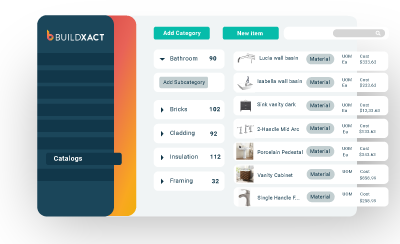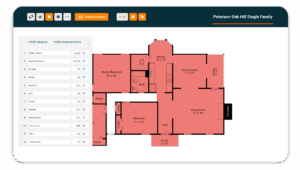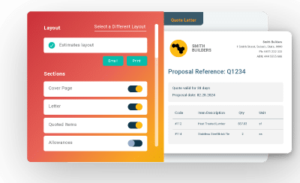By Dustin Elliott, Products and Customer Insights Analyst, Buildxact
After running more than 1,400 trainings with builders across Australia, New Zealand, Canada, and the United States, plus countless webinars, events, and one-on-one calls, I can say confidently that these five metrics separate the builders running a successful business from the ones just trying to keep their head above water.
Most builders are not tracking these. That means you are either missing chances to win more work or losing money without even realising it.
1. Estimate Accuracy
Most bids are still thrown together in Excel or Word, sent off to the client, and forgotten. At the end of the job, you are checking your bank balance to guess if you made money or not. That is not a system or a predictor of future success.
You have no idea what material or task you over allowed for, what you under allowed for, or whether that new apprentice you brought on at the last minute was worth the extra day rate. You are just hoping for the best and betting huge that your competitor down the street is doing the same.
What to do about it
If you are using something like Buildxact construction management software, you can bid with live dealer pricing so you start with the right numbers.

Then during the job, track what you actually spent. At the end you will know your variance percent on the job, category, and line item level. That number tells you if your bid matched reality. Without it you are just guessing and your future jobs never benefit from what you learn.
2. Bid Turnaround Time
Clients do not just want an accurate quote. They want it fast.
In our research, one of the most common reasons a builder wins a job is because they were the first to send through a proper bid. Not the cheapest. The fastest. When you anchor a price in someone’s mind early, every other builder has to work hard to shift it.
But too often I see builders walk the site, talk through the job, and then take a week or more to get a bid out. Sometimes two or three weeks. It is not laziness. It is that estimating manually is a time-consuming grind that often results in inaccurate numbers.
What to do about it
Track when you create a bid and when you send it. That gives you a simple turnaround number and helps you identify how to speed things up. Maybe you need to dedicate more time to improving estimate templates, workflows, or how you gather information upfront.
Aim to estimate in one to three days for a remodel and no more than two weeks for a new build. That alone will win you more jobs without changing a single line item.
3. Lead Source and Conversion
If I asked you where your last 10 leads came from and how many turned into jobs, could you answer? Most builders cannot. That means you are spending time and money chasing leads that are not worth it.
I worked with one builder who tracked this for a year. Not a single job came from his digital marketing. So he cut the agency where he was spending thousands of dollars per month, invested in better vehicle signage, even wrapped his wife’s car.
He was then able to find a new agency in the meantime that could deliver better results over time. The result was that more than half his leads now come from people who saw his car parked somewhere. That is a clear return on investment.
What to do about it
Tag the source when a lead comes in. Website. Social. Referral. Vehicle signage. Whatever it is. Then track how many of those turn into jobs. After a few months you will know where to put your energy and where to stop wasting money.
4. Change Orders and Extras
Mid-job changes are part of building but if you are not tracking them, and the time it takes you to make them, you are giving away profit. Every missed change you absorb eats into your margin and over time those little things add up fast.
What to do about it
Keep a log of every change order. Record what it was, whether it was quoted, if the client approved it, and if you actually charged for it. Patterns will appear. You might see that certain jobs or clients always push for changes. With that knowledge you can tighten your quoting process, set clearer expectations upfront, and make sure you are charging for the extras that chew up your time.
5. Rework Rate, The Silent Profit Killer
Rework is one of those things everyone shrugs off until you see what it does to your bottom line. A mistake in the quote, a missed detail in the scope, or a job done twice because it was not right the first time. Each one chips away at your profit.
You might not notice it on a single job but add it up over a quarter or a year and you will be stunned at how much time and money you are throwing away.
What to do about it
Keep a log of every rework item. Note what went wrong, how long it took to fix, and what it cost. Patterns will appear. Maybe certain contractors blow out more often or you are missing items from your templates or process. Maybe a type of job always has changes. That insight is valuable because now you can adjust your quoting, planning, or supervision to stop it before it starts.
Wrap Up
These five metrics are simple but powerful. They give you real control over your business. They stop the guesswork, show you where you are making or losing money, and give you early warning before small problems turn into big ones.
If you are already using a system like Buildxact, most of this data is already there. You just need to start looking at it.
Want to learn more about construction management software. Schedule a Buildxact demo today! Want to get started right away? Try a risk-free trial, and if you have questions, a Buildxact representative will be there to help!














